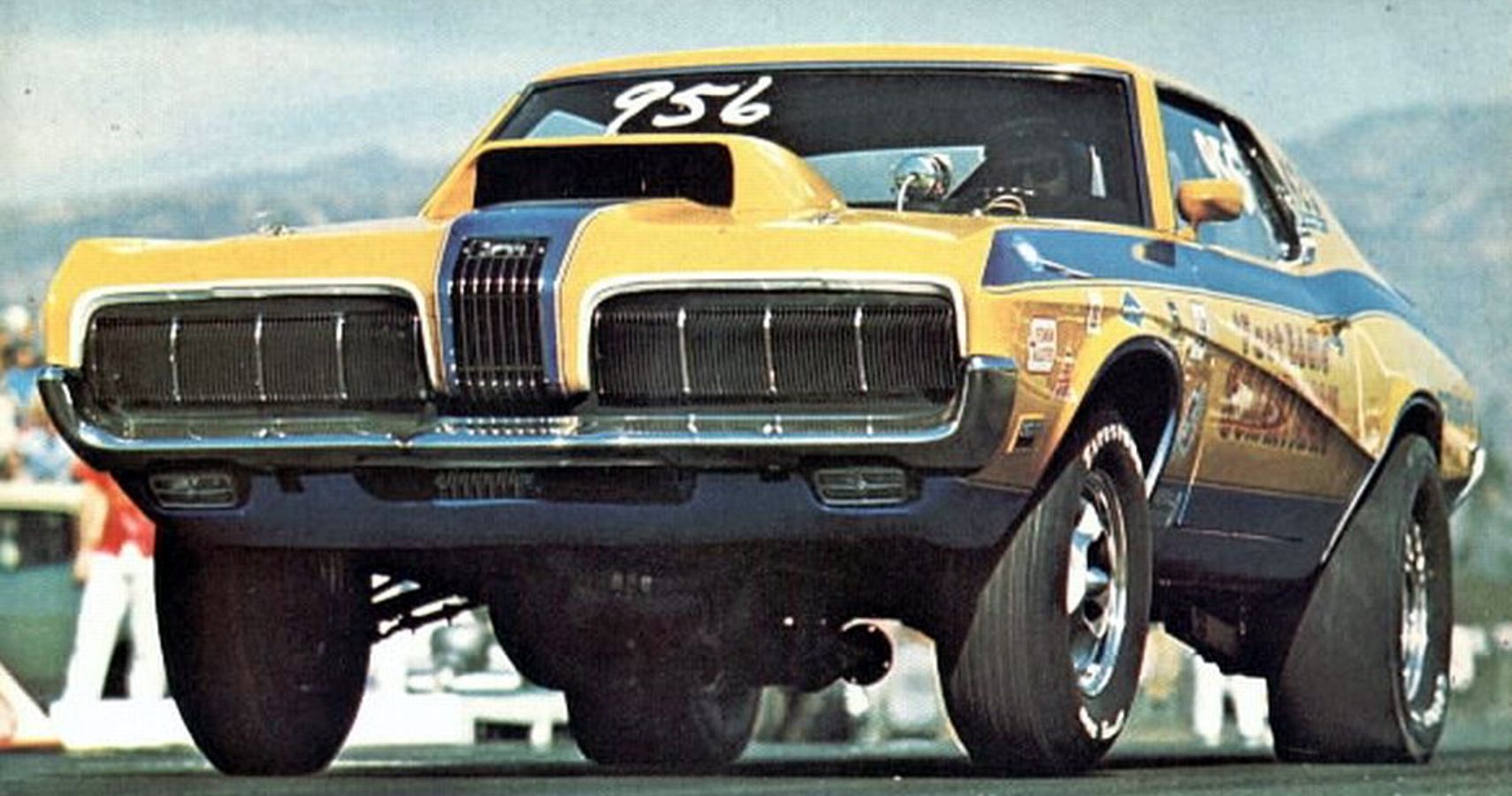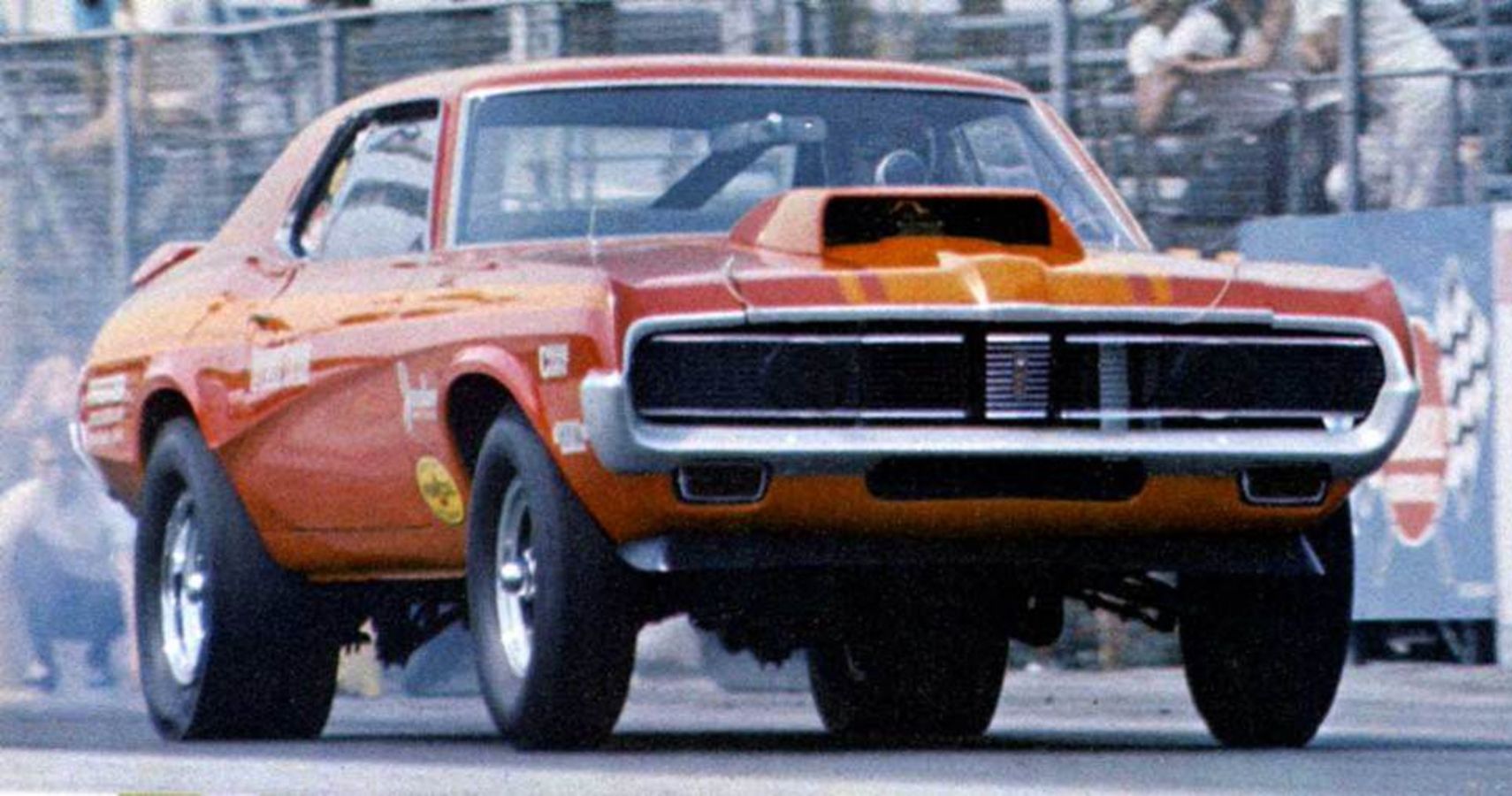The Ford Mustang first rolled off the showroom floor as a 1964 1/2 model. It was a simple vehicle, or as Carroll "Snake Charmer" Shelby was fond of calling it, a "Secretary's Car." It could be optioned as a 2 door coupe, fastback or convertible and you could order several engine and transmission options. It wasn't particularly known for its racing prowess, until suitably massaged of course, but it did have the virtue of being dead simple to maintain and it was a bargain for only $2,368.
Given its success, and ever eager to sell more models in the upscale segment, Mercury took the Mustang chassis and made a pony car of their own. The Mercury Cougar would first appear in the 1967 model year with a host of refinements and amenities not available on its more austere stablemate. And while you could option just about any engine, transmission and performance combination found on the Mustang, there were a few models that were not duplicated on Merc's "Cat."
The BOSS 429 Mustang is perhaps one of the rarest and most sought after of all the high performance Ford models. Originally produced for NASCAR homologation, only about 1,350 cars were made in its two year run from 1969 to 1970. And while the mighty "Shotgun" motor was never designed to go into the Mercury Cougar, two cars were made for use on the drag strip and promotional purposes. These are, perhaps, the rarest Mercury models ever produced.
These cars were specially prepared by Kar Kraft, the same outfit that tweaked the BOSS 429 Mustangs, and sold to drag racers "Fast Eddie" Schartman and "Dyno Don" Nicholson where they ran in the NHRA Super Stock class. Let's take a look at these truly rare "Cats" and what made them so special.
Rare Cat, Drag Cat
The two BOSS 429 powered Cougars that Mercury prepped for 1969 were not in any sense of the word production models. They were strictly for the track and labeled "clinic cars." In an effort to generate buzz and draw crowds on the showroom floor, they went across the country when they weren't racing. Educational sessions, or clinics, were held in an effort to school the public about the workings of these rare beasts and Ford's varied performance offerings.
The cars however were not as specially prepared for track use as "Dyno Don" and "Fast Eddie" would've liked. The chassis and bodies received minimal reinforcement and they were not as well thought out as Ford's own branded track weapons. This led "Dyno Don" to swap out the BOSS 429 in favor of Ford's 427 SOHC engine which revved higher and put out more usable horsepower to the ground. "Fast Eddie," on the other hand, kept the 429 but modded the Cougar with a bunch of non-stock exterior pieces.
Shotgun, Anyone?
The cars, however, were too slow as the BOSS 429 was rushed into production without optimal cam phasing, intake work and tweaking allowing it to win in the highly competitive NHRA S/S class. Likewise they didn't even have basic chassis and body mods necessary for the drag strip such as sub frame connectors and a welded in roll bar. Like the BOSS 429, the BOSS equipped Cougars required extensive work to accept the mammoth "Semi-Hemi" motor.
According to Hemmings, Kar Kraft began by stretching "the distance between the Cougar's shock towers by two inches and dropping the lower A-arms by an inch. A custom-fabricated hood, complete with a massive air intake, was also needed to accommodate the 429's added height, and to trim some of the up-front weight added by the big engine, both Boss 429 Cougars received fiberglass front fenders." This explains the extensive amount of post-production modifications done by "Dyno Don" and "Fast Eddie" to try to make them competitive which they never were.
Back In Action
In 2014, the pair got back together at the annual Ford Carlisle get together. Only "Dyno Don's" car has been restored and "Fast Eddie's" is in the process of being put back together. It's unclear exactly what state it'll end up looking like - in factory condition, as raced condition, or after mods done by "Fast Eddie" in the 1969 season. We'll have to wait and see. Check out the video above for a look at both cars. Buckle up.
Sources: Hemmings, StreetMuscleMag, JustACarGuy


